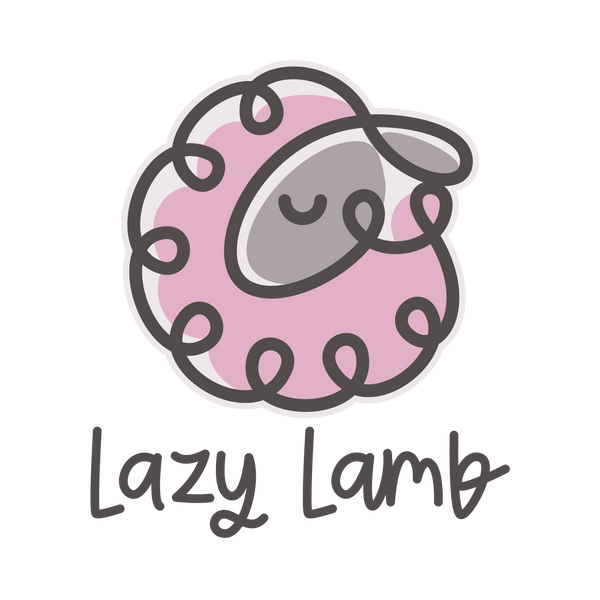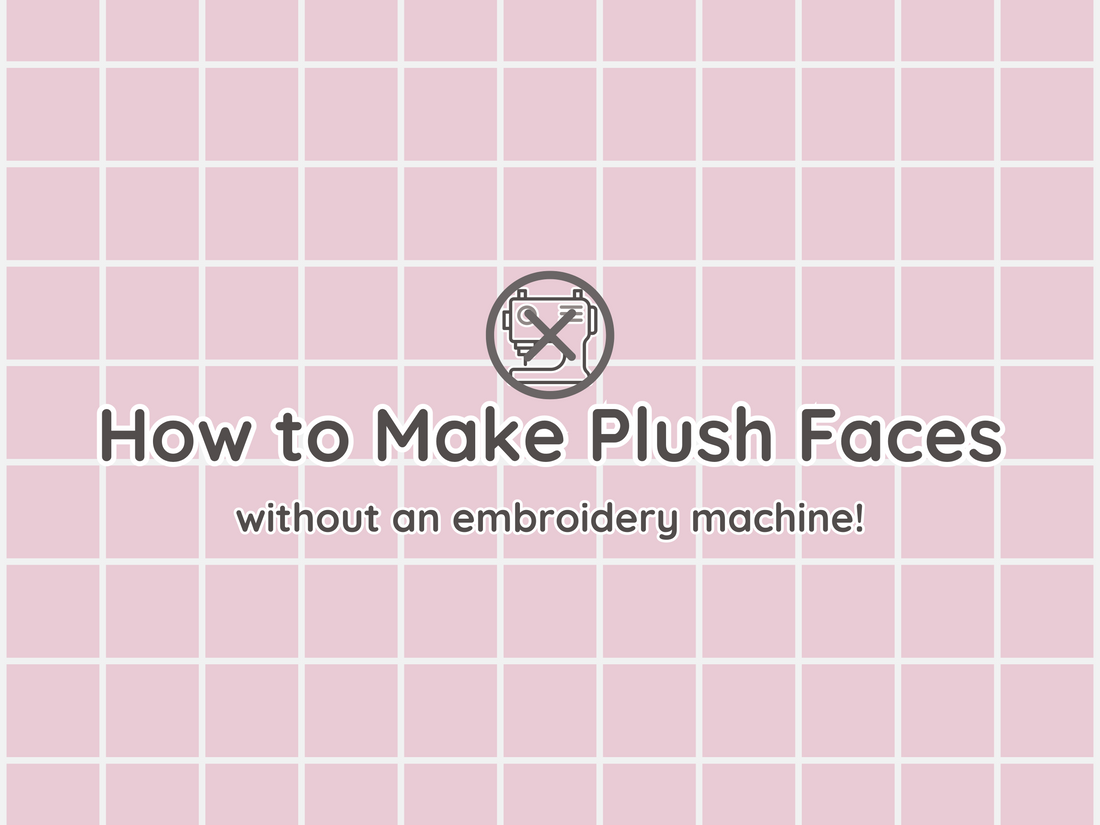This was a highly requested topic, and I totally get it; while I love my Brother PE-800, I also realize that an embroidery machine is a pretty big investment, with even the "cheap" models approaching $400. The good news is that an embroidery machine is absolutely not the only way to give your plush friends faces or other details! Let's talk about some great ways to do plush detail work without spending a lot of money on machinery.
All of these methods have a different look to them, so I've included examples of artists that use these techniques in their work- be sure to give them some love and check out their socials!
Hand Embroidery
Hand embroidery is the process of creating an image using needle and thread. Hand embroidery thread (which is very different from machine embroidery thread- that’s important!) is thicker and softer than other types of thread, and comes in a huge variety of colors. Hand embroidery is usually done in an embroidery hoop before sewing the plush together (though this isn't always true and it mostly comes down to personal preference) and since you only need your fabric, a hoop, thread, and needles, it’s quite accessible. The downside is that it’s incredibly time consuming. I used to spend about 4 hours on average embroidering my plush faces by hand. Best to have a podcast or a TV show on while you work.
| Pros |
|
| Cons |
|
Hand embroidery is also an art that's been around for thousands of years (for real, thousands!) which means there's a host of guides and resources available to learn. Whether you prefer videos or books you can probably find a free resource without much trouble at all!
This adorable felt otter by Evan Sky really shows how hand embroidery shines when used for detail work!
Plastic/Glass Eyes and Noses
This category could probably be divided into a couple sub-categories; you have your "safety" notions, which have a peg and washer that you use to permanently affix the eyes/nose to a plush, and flat-backed notions which are applied using glue. The end result is visually similar, it's just a matter of method.
| Pros |
|
| Cons |
|
This type of notion comes in a wide variety of options (including customizable clear eyes that can be painted, and if you're handy with resin you can even DIY your own!) but of course, they are sort of limited to 3D elements like eyes and noses and not as useful for things like mouths or markings.
Two Teddies' clown friends have big, shiny eyes that give them lots of personality! The other details are done in applique, which we're about to talk about-
Applique
Applique is, in simple terms, the process of making designs by sewing or gluing fabric onto more fabric. It's an excellent way to create markings and flat designs on plush and, like hand embroidery, is a very common technique that's not too hard to learn and requires no additional tools.
| Pros |
|
| Cons |
|
The downside of applique is that while it's excellent for large, simple designs, it's tricky to achieve a higher level of detail with. That's why I love doing embroidery on top of applique- you get the best of both worlds by quickly filling in large sections with fabric and then doing fine detail work on top in thread.
This apple pie frog by Abel / Creature Garden is not only ridiculously cute, but also shows how applique can be used to create intricate layered details!
Buttons
The humble button eye! Button eyes may seem a bit simple and obvious, but they continue to be popular for a reason. They give your work a charming handmade quality that really never goes out of style, plus they're cheap, easy to use, and come in a variety of shapes, sizes and colors.
| Pros |
|
| Cons |
|
Link (@gingergothart) uses a mix of techniques for their plushies, but I particularly adore the button eyes and creative use of an upside down heart-shaped button for the nose on this little bat! 🦇
Iron-on Transfers
Iron-on transfers can be solid colored sheets or printable paper, which allows for a huge amount of customization since you can print out your own digital art to use. The downside is that iron-on transfers won't adhere properly to all fabrics (especially fabrics with longer fibers) and if not very carefully applied can and will start to peel over time. In addition, people tend to not love the texture difference between the transfer material and fabric. I think this is a technique that can be very fun to play with, but should be used carefully.
|
Pros |
|
| Cons |
|
This Mimikyu plush made by Lani is a super fun example of this technique that uses holographic iron-on vinyl!
Sublimation Printing
Many plush makers are investing in at-home sublimation printing machines, but because they cost about as much if not more than an embroidery machine it seems against the spirit of the article to focus on those- that said, you can still use sublimation printing in your plush projects without buying a whole sublimation printer! Websites like Spoonflower offer custom printing on many fabrics and are an obvious choice, but you could also consider contacting a plush maker or other artist that owns a sublimation printer and asking them to print for you for a fee- lots of people are happy to make a little extra money off their machinery investment, and this gives you more freedom to select the fabric you want to use as the base to print on. The main downside to this method is that the color will only penetrate the surface of the fabric, which means that when working with fabrics with a longer pile the white base may show through.
| Pros |
|
| Cons |
|
This plush by Sophie's Plushies is made almost entirely from fabric printed through spoonflower to create the intricate markings and gradients!
Fabric paints
Fabric paints and markers can be used to paint details directly onto the fabric, either freehand or using a stencil for consistency. A lot of detail can be achieved like this, especially if you're skilled at painting already, and you don't even necessarily need to use fabric paint- there are fabric paint mediums you can mix with acrylic paints to make them more suited to fabric, giving you access to the much wider selection of non-fabric paints for your project. Just keep in mind that fabric with a longer pile will be harder to paint, and the paint will affect the softness of the fabric as it dries.
| Pros |
|
| Cons |
|
This super cute tiger made by Mokobuns has a mix of hand-painted and airbrushed details (and is another example of adorable button eyes, too!)
All of these techniques and materials are useful on their own, but the real magic happens when you start combining them- you may have noticed most of the examples used throughout this post mixed and matched techniques to play to the strengths of each, and each combination and style has its own personality. As always, I'm a big fan of experimentation and very much encourage playing around with all your options. The most important thing is having fun with it and being creative!

